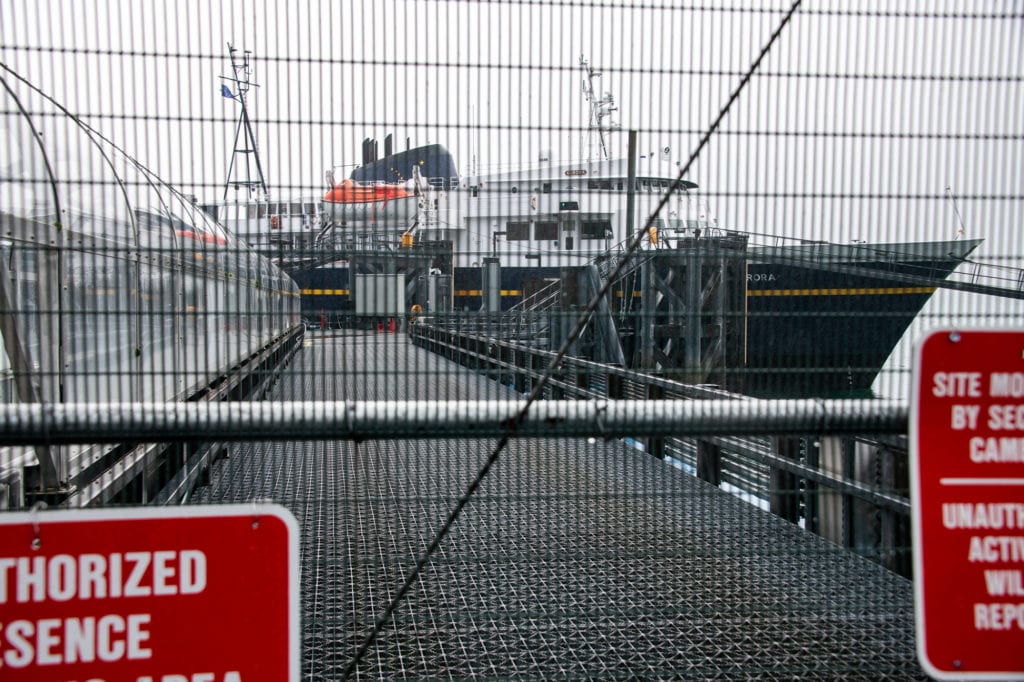
When it comes to recommendations to improve the functionality of the state’s marine highway system, Cordova Mayor Clay Koplin spares no words on issues from design to funding to keep this vital arm of the state’s economy going.
Those recommendations, in a recent white paper from Koplin, range from designing vessels and support infrastructure specifically for the region they will serve to putting the vessel and infrastructure in that region and keeping it there, and maximizing the federal capital funding for the system.
On a more immediate note though, namely comments due by today, Friday, Aug. 14, on the proposed Alaska Marine Highway System operating plan for October through April 2021, Koplin said vessel repairs, shipyard work and the ongoing pandemic will be the driving forces in what happens over the next few months.
“Deferred maintenance and the pandemic will be driving service, Koplin said, in an interview on Tuesday, Aug. 11.
“It’s hard to say (but) I feel like the pandemic is starting to come in waves. An outbreak will flare up. People will be more careful,” and then as the wave declines so will caution, he said.
As for ferry service itself overall, “we have nowhere to go but up,” Koplin said. “I hope for the best but expect the worse. We are trying to be part of the solution.”
Sen. Gary Stevens, R-Kodiak, offered a more blunt observation.
“This administration is nickeling and diming the Alaska Marine Highway System to death,” Stevens said.
“Cordova and the other communities served are suffering the consequences,” he said. “The recent decision to eliminate Seldovia service this winter is shocking and unnecessary. The Legislature is willing to add the funding needed to return the AMHS to its much-needed status. It is unfortunate the Tustumena requires emergency repairs, proof the construction of a replacement vessel must proceed. I am convinced that if the AMHS and the Department of Transportation were committed they could solve the immediate needs of Cordova, Seldovia and all our communities. We continue to encourage the department to find a reasonable solution.”
When the Department of Transportation and Public Facilities released its proposed winter operating plan for the ferry system the deadline for public comment stretched only to the end of the week. DOT&PF officials said that AMHS revenues were significantly lower than expected due to the COVID-19 pandemic. As a result, they said, it has become necessary to build the operating plan with minimal essential service to most communities. Some service gaps will still exist from vessel overhauls and layups as a result of available funding.
The draft operating plan, DOT&PF concluded, is based on expected funding levels for fiscal year 2021. That plan includes the Kennicott covering Bellingham/Cross-Gulf, Prince William Sound, Homer and Kodiak through Jan. 6, 2021 resuming service on March 18. Ports of call include Bellingham, Ketchikan, Wrangell, Petersburg, Juneau, Whittier, Cordova, Homer and Kodiak on a two-week cycle. That proposed schedule would also include the Aurora beginning to cover Prince William Sound on April 15, as steel work to repair the Aurora is under way.
Koplin’s white paper list also includes some blunt observations, in which the mayor argues the overall value of AMHS to residents, businesses and visitors to the state.
“The AMHS is an investment in Alaska,” Koplin wrote. “In 2014, the state of Alaska general fund contribution of $117 million to the AMHS resulted in a total return on investment of $273 million. This is a return of more than two to one to the Alaska economy.”
Koplin also noted that businesses in coastal communities use the ferry system to spend millions annually in Anchorage and with vendors statewide. That choice is an alternative to doing business in Seattle and shipping from Seattle via barges.
“Not only does this expense burden small businesses, but it cuts economic output to Anchorage and other statewide vendors,” he said.
Case in point: a local Cordova restaurant and hotel owner estimates a savings of $50,000 to $100,00 annually when running freight trucks directly to Anchorage via Whittier from Cordova. This business alone spends hundreds of thousands of dollars with Anchorage and instate vendors each year.
Seafood processing plants play a critical role in Alaska’s economy and depend heavily on AMHS for transport of work crews, construction materials and products, he added.
“It is critical to maintain cost-efficient transportation for the companies and peoples investing in these seafood ports,” he said.
The state’s visitor industry also depends on the ferry system, carrying over 100,000 nonresident passengers annually and bringing outside dollars to the state, with average person spending at $1,700.
“Applying this average to the roughly 17,000 ferry passengers who enter/exit Alaska via the ferry yields a total annual AMHS visitor spending estimate of $29 million,” he said.





